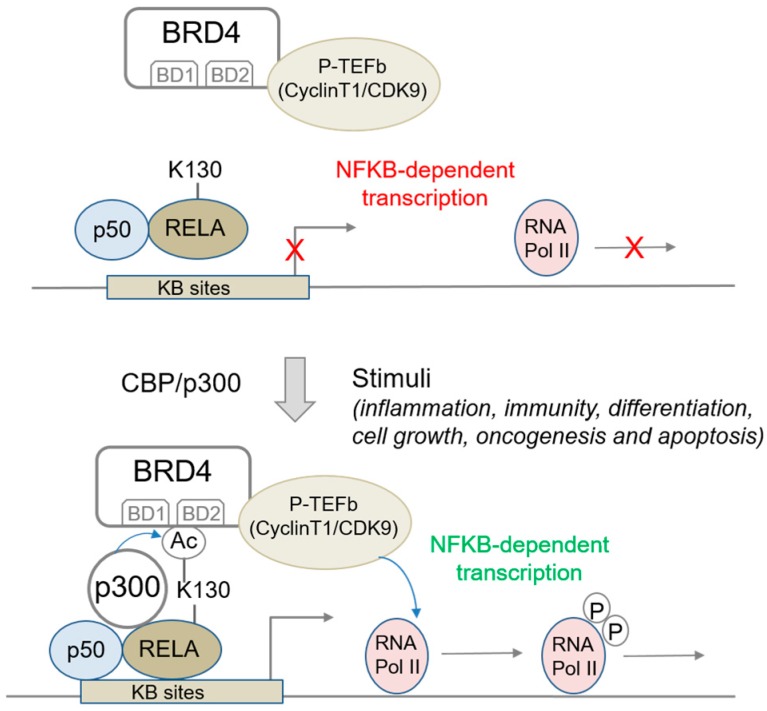Figure 2.
Schematic model for the binding of BRD4 to acetylated lysine-310 of RELA/p65 and the role of this interaction in the transcriptional activation of NFκB. Stimulus-dependent acetylation of RELA at lysine-310 by p300 induces the recruitment of BRD4 to the promoter via its bromodomains. BRD4 further activates CDK9 to phosphorylate the CTD (C-terminal domain) of RNA polymerase II and to facilitate the RNA pol II-mediated transcription of NFκB target genes. The p50 factor is a processed form of the REL family member p105 (NFκB1) that heterodimerizes with RELA/p65 and that is required for its transcriptional activation functions.

